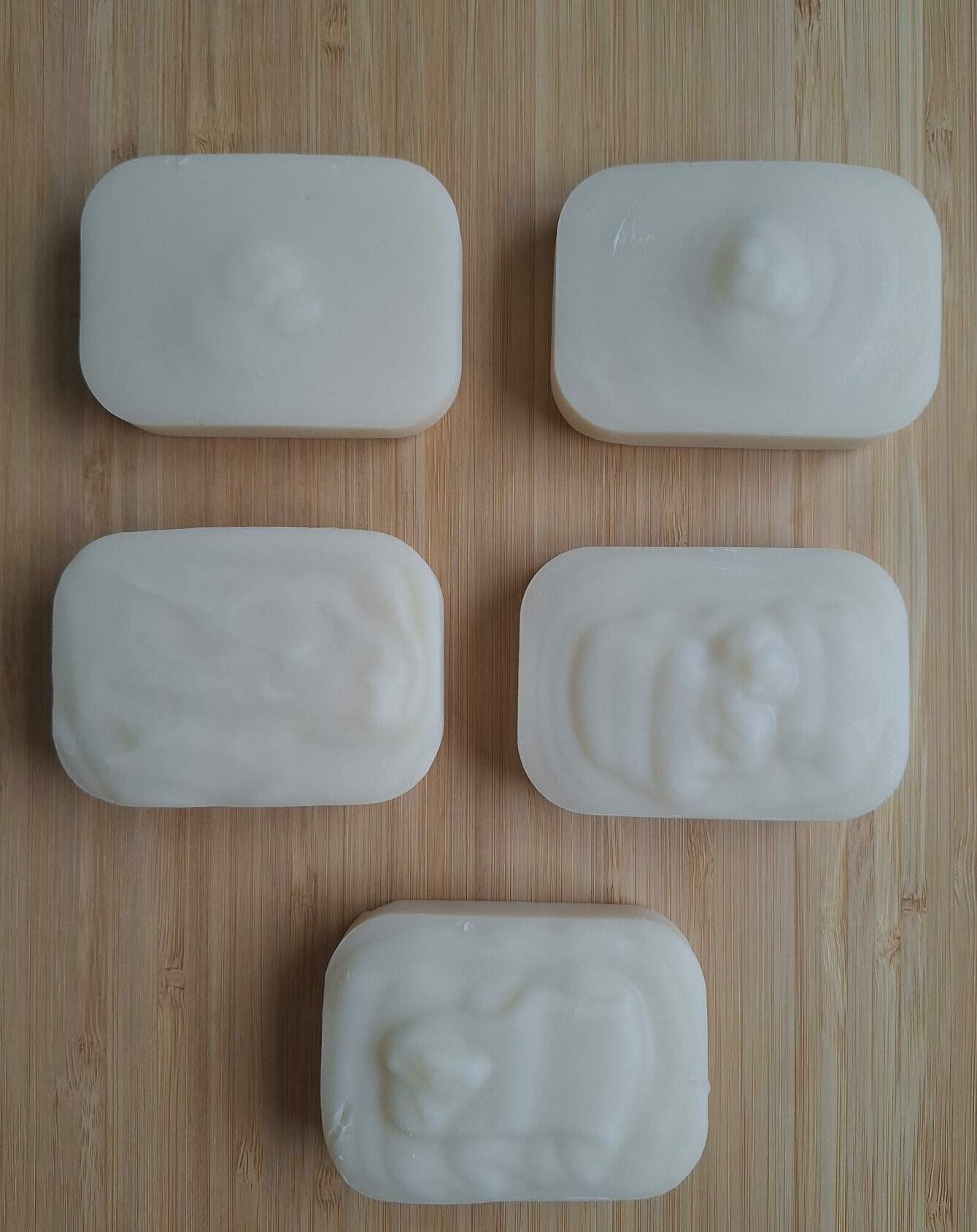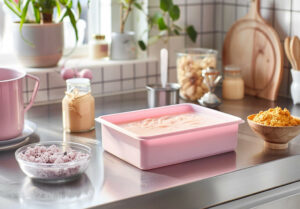Oops, my soap’s a dud: How to avoid mistakes and get the perfect trace

If you’ve ever tried to make your own soap, you’ll know that sometimes things go wrong… And yes! It’s a soap-maker’s nightmare! The paste doesn’t set, the soap is grainy, or worse still, it never hardens.
No need to panic! In this article, we’ll be talking about common soapmaking mistakes, in particular around “the trace”, a key concept in cold process soapmaking.
We’ll also look at how to recognize it, reach it and correct mistakes when it eludes you.
What is “trace” in soap-making?
In the world of artisanal soapmaking, the trace is when the mixture of caustic soda (lye) and oils thickens to the point of leaving a temporary mark on the surface when you dip a mixer or spatula into it. This is a sign that saponification (the transformation of oils into soap) is well advanced, and that you’re ready to add ingredients such as essential oils, colorants or exfoliants.
There are three trace stages:
- Light trace: The mixture is still fairly liquid but thickens slightly.
- Medium trace: The mixture is thicker and leaves visible marks when stirred.
- Thick trace: The mixture becomes creamy, almost like cake batter. At this stage, it’s ready to be poured into molds.
How do you get the perfect trace?
Getting the trace may seem simple, but there are several factors to consider to make sure you don’t miss it:
- Use an immersion blender: This is the ideal tool for speeding up the thickening of the mixture.
- Don’t overheat oils: If oils are too hot, it can be difficult to obtain the trace. The ideal temperature is around 30 to 45°C for oils and soda ( The choice is yours: Micro-Pearl Soda or Liquid Soda? – Planete-Savons).
- Avoid excess water: Too much water in the recipe can delay the appearance of the trace. Make sure quantities are well balanced.
- Be patient: Sometimes it can take a long time to form a trace, especially if you’re working with heavier oils like olive oil (100% coconut soap is one of those soaps that will take a long time to form a trace).
Common errors and solutions
1. Soap doesn’t pick up traces
This can happen if you haven’t mixed enough or if your recipe contains too much water.
Another reason could be a problem with the soda, for example if it hasn’t completely dissolved.
Solution:
- Check your soda: Make sure it is dissolved in water before adding it to the oils.
- Use a hand blender instead of a spoon for more efficient blending.
- Reduce the amount of water in the recipe if this happens frequently.
2. The track is too fast
If your soap thickens too quickly, you may have used oils or butters that accelerate saponification, such as shea butter or coconut oil.
This may also be due to the addition of essential oils, such as cinnamon or peppermint, which can cause a rapid trace.
In each of our product sheets, we inform you about the action of the ingredient during saponification.
Solution:
- Reduce the temperature of the oils and soda to slow down the reaction.
- Add the essential oils with a light touch to prevent the mixture from thickening too quickly.
3. Soap is granular
A granular soap may result from poor emulsification or from adding ingredients such as clays or exfoliants too quickly, before the trace is reached.
Solution:
- Stir sufficiently to achieve a good emulsion before adding additional ingredients.
- Add exfoliants and other additives in a light trace to avoid lumps.
- Mix the clays and plant extracts with your hot oils, blend to obtain a fluid mixture and then add your soda (NAOH).
4. Soap never hardens
This can be caused by an error in the proportions of lye or oils. Too little lye means the soap doesn’t saponify completely.
Solution:
- Check your measurements: Always use a precision scale to weigh soda ash and oils.
- If you notice too late that the soap isn’t hardening, you can melt the batch again and add the missing amount of soda.
5. Soap separates
The soap mixture may appear to separate, with a layer of oil forming on the surface. This often happens if the temperature is too low, or if the mixture has not been sufficiently emulsified.
Solution:
- Gently reheat the mixture and use an immersion blender to restore the emulsion.
- If the mixture cannot be recovered, you can “rebatcher” it and start the process all over again.
Tips for making soap every time
- Take your time: It’s essential not to rush things. Patience is the key to getting the right track and avoiding missteps.
- Experiment gradually: If you’re a beginner, start with simple recipes before trying out more complex additions like color layers or special ingredients.
- Keep your notes: Document each recipe, ingredients and temperatures so you can adjust your next batches based on your successes or failures.
In a nutshell
Getting the perfect trace takes a little practice, but with the right tools and techniques, you’ll get the job done. And even if you miss a batch, don’t panic! Most mistakes are recoverable. Soapmaking is as much an art as a science, so have fun, experiment, and remember that every failed soap is an opportunity to learn and improve.



0 Comments